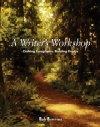 |  A Writer's Workshop: Crafting Paragraphs, Building Essays Bob Brannan,
Johnson County Community College
Illustrating through Examples
Summary1.Expository writing primarily communicates ideas, information, and opinions. After a relatively general statement is made (topic sentence), examples, explanations, and details are used to develop and clarify that statement. |
 |  |  | 2.Examples may be based on personal experience or otherwise. Writers often develop examples through close observation, accumulated knowledge, "what-if" situations, generalized or typical instances, and research. |
 |  |  | 3.Narrative/descriptive elements are often found within examples, especially those based on personal experience. |
 |  |  | 4.Tone in writing is the attitude or feeling the author has toward his subject and the relationship he wants to establish with his audience. Writers vary their tone based on their material and audience. |
 |  |  | 5.Writing that adopts a more-formal tone seldom uses "I" and relies heavily for development on close observation, accumulated knowledge, "what-if" situations, generalized or typical instances, logical reasoning, and research. |
 |  |  | 6.To most clearly guide a reader through a paragraph using multiple examples, introduce each main example with a subtopic sentence. |
 |  |  | 7.Expository and persuasive writing often organizes examples from least to most important or dramatic. |
 |  |  | 8.Transitional words and other connectors are especially important in linking subtopic and concluding sentences to the rest of the paragraph. The transitional phrases "for example" and "for instance" are invaluable in illustration paragraphs. |
 |  |  | 9.Examples are most adequately explained by following the principle of increasing specificity: each example supports the previous one by limiting the category to which the previous example belongs. |
 |  |  | 10.Writing is never complete until it has gone through several revisions and careful editing. |
|



 2002 McGraw-Hill Higher Education
2002 McGraw-Hill Higher Education